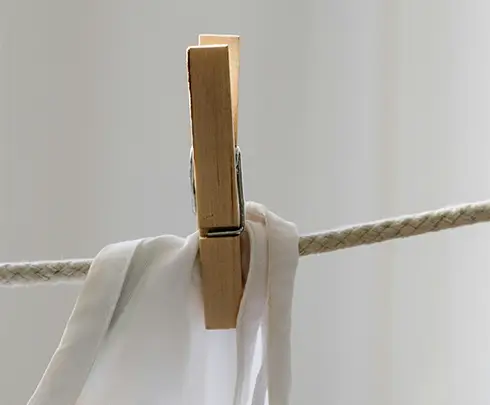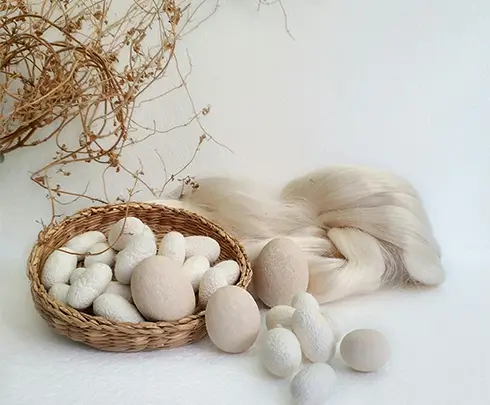OEKO-TEX® STANDARD 100 Certification
A Mark of Quality for Pure Mulberry Silk Products
As consumers become more conscientious about the safety of the products they buy and use, certifications like OEKO-TEX® STANDARD 100 have emerged as a symbol of trust and transparency. For silk products, OEKO-TEX® STANDARD 100 is a mark of quality. But what exactly is OEKO-TEX® STANDARD 100, and why is it particularly important for silk products? Let’s explore this certification and its significance in the world of silk.
What is OEKO-TEX® STANDARD 100?
OEKO-TEX® STANDARD 100 is a globally recognized certification for textiles that ensures the absence of harmful chemicals in fabric products. The standard was developed by the International Association for Research and Testing in the Field of Textile Ecology (OEKO-TEX), which is a global network of research and testing institutes.
The certification evaluates products at all stages of production— from the raw materials to the final product—and assesses their safety for human use. The main focus is on ensuring that textile products, including clothing, bedding, and other fabric goods, do not contain harmful substances that could be harmful to health or the environment.
To earn the OEKO-TEX® STANDARD 100 certification, a product must pass a rigorous set of tests for over 100 harmful substances, including pesticides, heavy metals, formaldehyde, and other toxic chemicals. Only textiles that meet strict safety criteria are awarded the certification, making it a mark of trust for consumers.

The Classes of OEKO-TEX® STANDARD 100
OEKO-TEX® STANDARD 100 doesn’t simply label products as “safe”; it categorizes them into different classes based on the intended use of the textile and the potential risk to human health. Understanding these classes can help consumers make more informed choices when purchasing silk and other textile products. Here’s a breakdown of the different classes within the OEKO-TEX® STANDARD 100 certification:
Class I – Products for Babies and Toddlers
This class covers textiles that come into direct contact with the skin of babies and toddlers, such as baby clothing, diapers, and bedding. These products must pass the most stringent tests, as babies’ skin is more sensitive and vulnerable to harmful substances. Silk products in this category undergo the strictest safety evaluations to ensure that they are completely safe for young children.
Class II – Products for Direct Skin Contact
Textiles in this category are those that come into direct contact with the skin of older children and adults, such as underwear, shirts, or bed linens. Although the safety requirements are still high, the tolerance for certain substances may be slightly more lenient than for baby products. Nonetheless, these products must still be free from harmful chemicals that could lead to skin irritation, allergies, or other health issues.
Class III – Products for Indirect Skin Contact
This class includes textiles that don’t touch the skin directly but are still in close contact with the body, such as outerwear, jackets, or upholstery fabrics. While these products are important for comfort and well-being, they are generally subjected to less stringent testing compared to products in Classes I and II. However, they still must pass rigorous checks to ensure that harmful substances do not leach from the fabric.
Class IV – Decorative Fabrics
This category applies to textiles that are not in direct contact with the skin at all, such as curtains, drapes, and other home decor items. These products are typically subjected to the least restrictive safety requirements under the OEKO-TEX® STANDARD 100 because they have less direct impact on human health. However, they still need to meet minimum standards to avoid harmful emissions or irritants.
For Silk Suen, ensuring that the products are not only luxurious but also safe and sustainable is a top priority. The certifications of our products fall under Class I (baby products), Class II (apparel and bedding), and Class III (accessories and outerwear), meaning that our customers can be free from harmful substances when purchasing with us.
Why Does OEKO-TEX® STANDARD 100 Matter for Silk?
Silk is renowned for its natural beauty, softness, and luxurious feel. It is a fiber that has been cherished for centuries and is often associated with high-quality, premium products. However, as a delicate and natural fiber, silk is also susceptible to contamination by harmful chemicals during its production process. This is where the importance of OEKO-TEX® STANDARD 100 certification comes in.
Silk is produced through a complex process that involves multiple stages, including harvesting the cocoons, weaving the threads, dyeing the fabric, and finishing the final product. During these stages, various chemicals—such as dyes, finishing agents, and other additives—are commonly used. While many of these substances are safe, others can pose health risks. For example, certain dyes or finishing chemicals may cause skin irritation, allergies, or even more serious health concerns over time.
OEKO-TEX® STANDARD 100 certification ensures that the silk products you purchase are free from harmful chemicals that can compromise your health and well-being. For Silk Suen, adhering to this certification helps ensure that our products are as safe as they are luxurious.
How to Check the Validity of the Certification?
It’s important for consumers to verify that the OEKO-TEX® STANDARD 100 certification is valid and up-to-date. Here’s how you can check the validity at Silk Suen:
1. Look for the OEKO-TEX® label
Genuine certified products will carry an OEKO-TEX® label. This label usually includes the specific OEKO-TEX® standard it meets, a unique certification number, the name of the certifying body and the official OEKO-TEX® website of the standard.

2. Check the product’s certification number
Open the official OEKO-TEX® STANDARD 100 website and verify whether the certification is valid and current by entering the certification number. If the certification is valid, the website will show a green ✔ symbol and display more details of the certification.
3. Contact Silk Suen directly
If you are uncertain about the certification, don’t hesitate to reach out to us directly for confirmation.
By taking these simple steps, you can ensure that the silk products you are purchasing are genuinely OEKO-TEX® STANDARD 100 certified and free from harmful substances.

Silk Suen’s Commitment to OEKO-TEX® STANDARD 100
At Silk Suen, we understand that our customers expect the very best in both quality and safety. That’s why we collaborate with professional silk factories that are certified under the OEKO-TEX® STANDARD 100. These partnerships allow us to deliver premium silk products that are not only soft, luxurious, and beautiful, but also completely safe for daily use.
We go the extra mile to ensure that the certification is valid and current. Our team regularly checks the certification status of our manufacturing partners, conducting thorough inspections to guarantee that our silk products meet all necessary safety standards. This commitment to quality and transparency is a core part of our brand’s ethos, ensuring that our customers can trust our products to meet the highest standards of safety, luxury, and sustainability.
Silk Suen provides premium, 100% pure mulberry silk products, including bedding, clothes and accessories. Shop here and indulge in the ultimate in comfort, elegance, and beauty.



